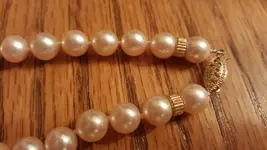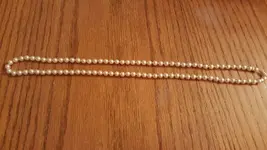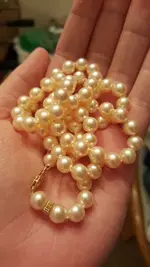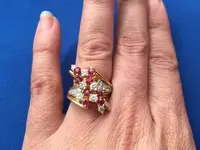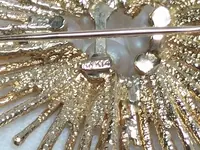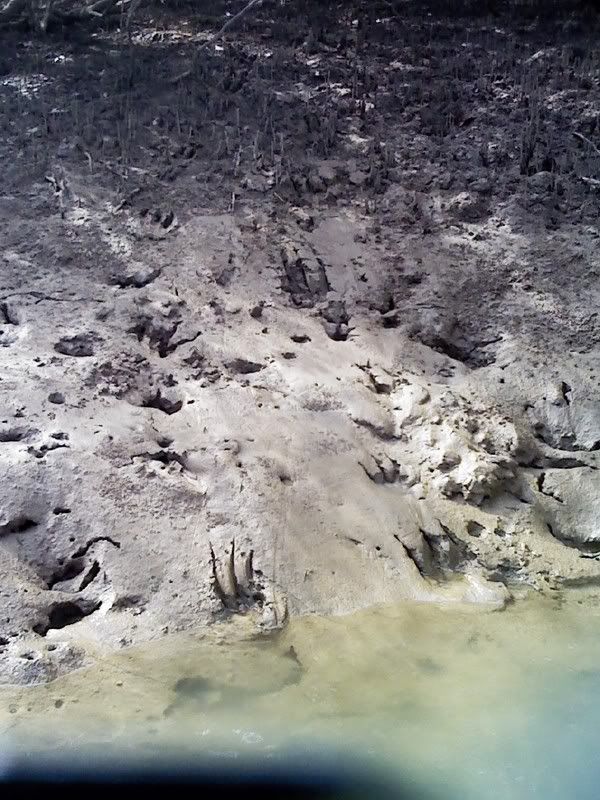Pricing is always tough...
Here's the thing... say your a pearl farmer... and lest say for argument sake you seed say 100,000 shell this year. In 2 years time when you harvest them, (for re - seeding) if you had the very best Japanese pearl seeders, (the little round seeds are made from Mississippi river freshwater pearl shell "spheres") the "take" reate where the oyster doesn't spit the seed out can be as high as 80%. With someone learning to seed it can be as low as 40% or less.
So lets say we get 80% or 80,000 pearls - that sounds like a lot, BUT, to make a string like that with every pearl, graded to the same shape, size, and lustre, as well as the rarity of the roseate color... it might take 3 or more years harvests to get enough of those exact same pearls, to make such a string.
In the days prior to cultured pearl - you can imagine how hard / dangerous it was for pearl divers in their hard hats and lead boots to harvest enough wild oyster off old pearling luggers - to find enough natural pearls all the same size shape color lustre etc to make a string like that - they would be priceless!.
Maybe 30 or more years harvesting and saving them up until you had enough!
But even in cultured pearl - that's not a string any one grower can make in just one years harvest.
You see - that's where the rarity value comes in... it's not just a factor of the number of pearls times their wholesale value of $50 each. Its the fact that they are a one off string - maybe that farm went out of business... how many year s will it be before anyone can produce another string identical?.
How much to do you have to outlay to buy enough pearls to then grade them for shape, size, and lustre, as well as color, - then save them until 2 or 3 more years harvests, and buy them up and save them, until you finally have enough for that one matched string?
So you may have a LOT of capital out for 2 or 3 years to come up with those specific pearls and that all adds to the cost of producing a string like that! Rough guess $10K - maybe more at auction depending on the day and the bidders and of course the auction fees. I'd start with a reserve of $10k...
As for care - keeping them out of direct sunlight (i.e. in a felt lined jewellery box is a good start) BUT actually wearing them is important the oils from human skin enhance the lustre believe it or not...it keeps the pearls lubricated....sounds stupid but you will see jewelers in the know - handling pearls to keep them lubed...with human oil from the skin!
What you have to be careful of is the age of the string and whether they are due for re stringing so that you don't have the risk of the string breaking due to age / deterioration and possibly lose / damage any on the necklace.
It's a seriously nice piece - I would have it professionally appraised for insurance / replacement purposes if it were me!.
What people don't see... is the young guys who probably risked their lives every day, swimming the pearl lines, when those pearl oysters were just young "spat" from the hatchery put out into cages for the first time, to clean off any silt algae growth etc so that the young oyster got the maximum nutrients out of the passing water from each tide shift! At our Farm it was 7 meter tides (so 23ft) diurnally (2 complete changes every 25 hours) and they would swim those pearl lines every day, for months & months among the tiger sharks, crocodiles, irrucangi jellyfish, blue ringed octopus, cone snails and stone fish, everyone of which could kill you!.
It's not a job for the feint of heart... my 2 lads did it every day, but they carried "appropriate protection" in case of attack...and weren't afraid to employ it when needed.
Few understand the risk capital involved in pearl farming.
Our place we "inherited" after a cyclone hit it in 1999, wiping it out completely... we had to rebuild EVERYTHING from the ground up!
And - it's isloated/ remote area work our nearest neighbors were 35Nmiles away by boat.
These big boys were always swimming past the pearl lines... the black and white one bottom left not breaking the surface is a great white the size of a tractor trailer trying to separate the whale calf from its mother to eat it!. (humpbacks or southern right whales probably).
Then there were the crocodiles as well.
Every mangrove creek onshore nearbye had its resident population of snappin handbags!.
